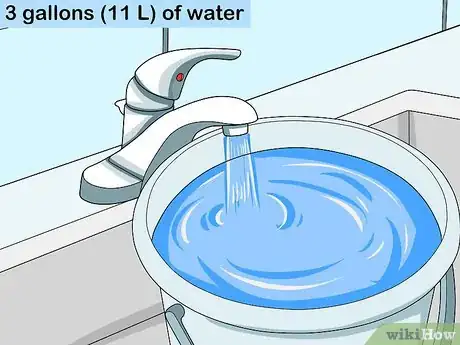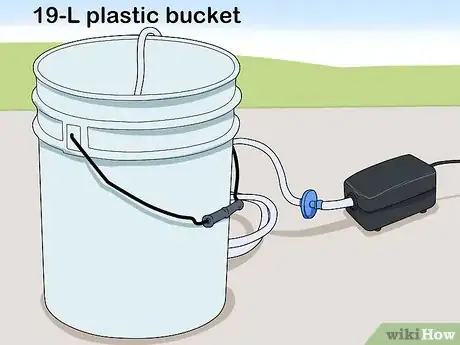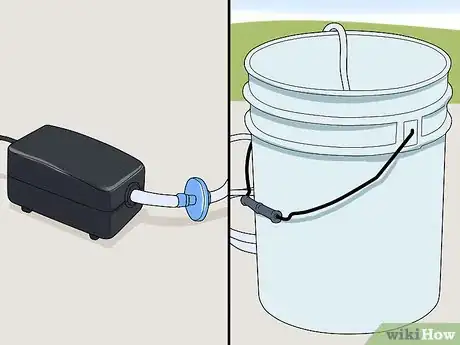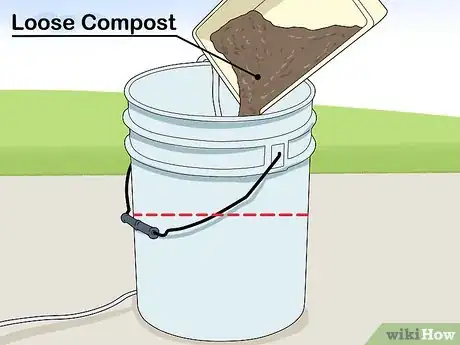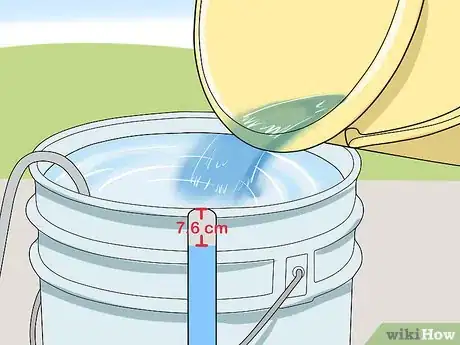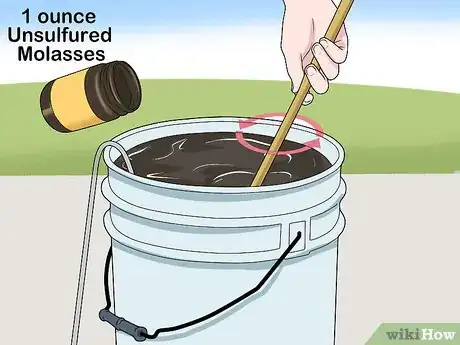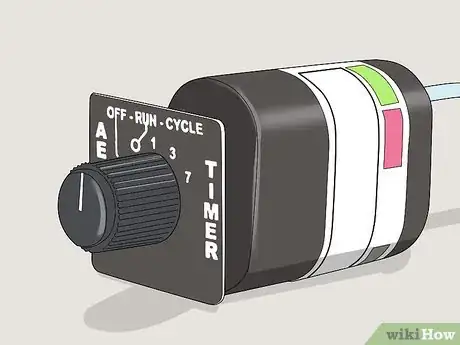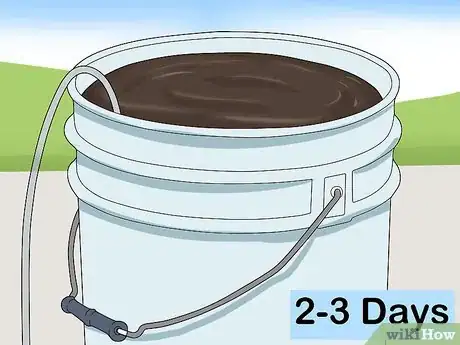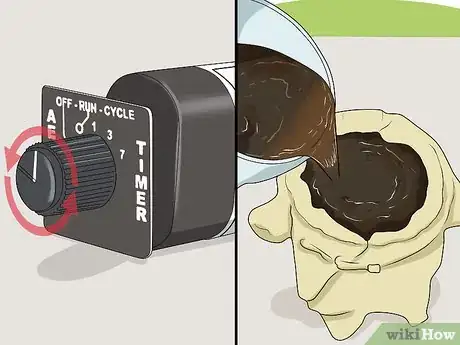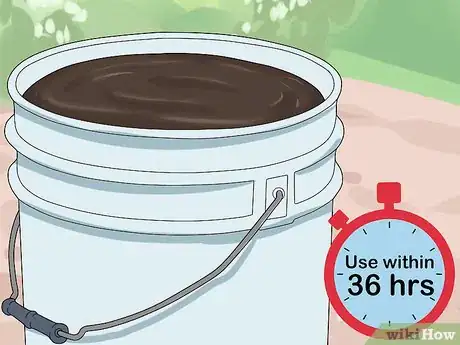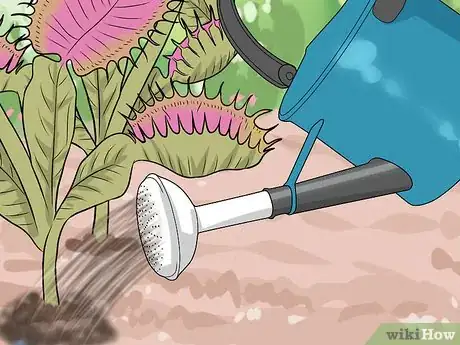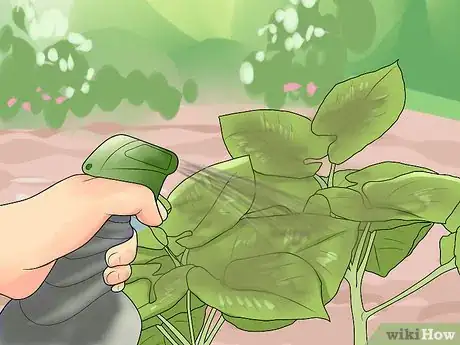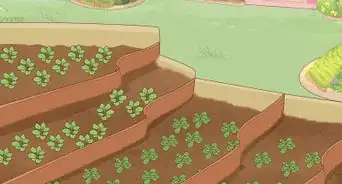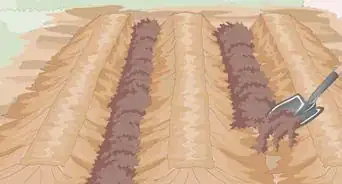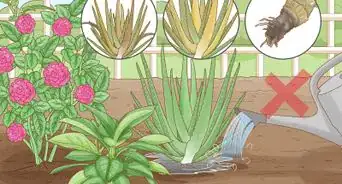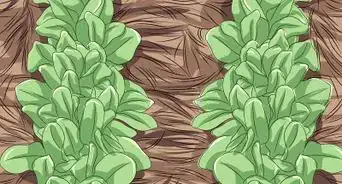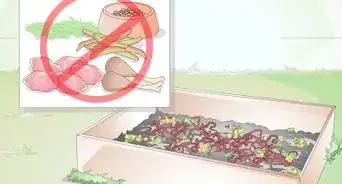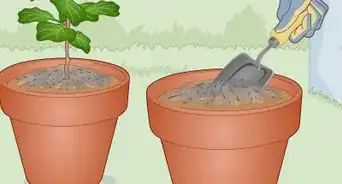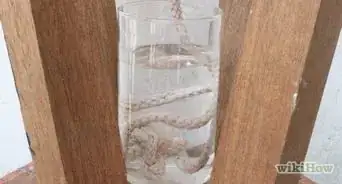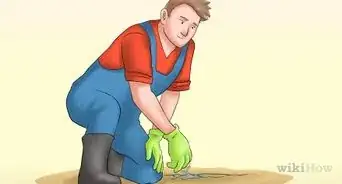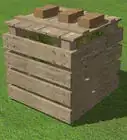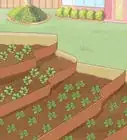This article was co-authored by wikiHow Staff. Our trained team of editors and researchers validate articles for accuracy and comprehensiveness. wikiHow's Content Management Team carefully monitors the work from our editorial staff to ensure that each article is backed by trusted research and meets our high quality standards.
wikiHow marks an article as reader-approved once it receives enough positive feedback. In this case, 86% of readers who voted found the article helpful, earning it our reader-approved status.
This article has been viewed 317,090 times.
Learn more...
Compost tea is a well-balanced and nutrient-rich fertilizer that you can make by brewing compost in water. This fertilizer can be used on flowering plants, vegetables, houseplants, and crops of all sorts to increase growth, blooms, and yields. The trick to making compost tea is using well-aged compost that doesn't contain any dangerous pathogens, and using a pump to aerate the tea as it brews. That way, the beneficial microorganisms in the soil are able to thrive in the tea, and this makes for healthier plants.
Steps
Making the Tea
-
1Dechlorinate your tap water. You'll need around 3 gallons (11 L) of water to make the tea. Let the water sit out in the sun and fresh air for several hours. This will allow any chlorine in the water to break down, because chlorine will kill the beneficial bacteria in the compost tea.
- You don't have to aerate the water if you're using well water or another water source that doesn't contain chlorine.[1]
-
2Place a pump aerator in the bottom of another large bucket. To make the compost tea, you'll need a 5-gallon (19-L) plastic bucket. Place the aerator from a pond or aquarium pump in the bottom of the bucket. You'll attach this to an external pump, which will keep the tea moving as it brews.[2]
- Make sure the pump you use is capable of moving at least 5 gallons (19 L) of water.
- The pump system is necessary to aerate the compost tea as it brews. Stagnant tea will become anaerobic, and this won't be good for your plants.
Advertisement -
3Attach the aerator to the pump. Attach one end of a flexible tube to the aerator in the bottom of the bucket. Attach the other end of the tube to the pump outside the bucket. You can either leave the pump on the ground beside your tea, or clip it to the side of the bucket, just make sure no excess water runs back into the pump.[3]
-
4Fill the bucket halfway with loose compost. When the aerator is in place and attached to the pump, add mature compost to the bucket. Don't fill the bucket more than half way, and don't pack the compost down. The compost must be loose for the aerator to work.[4]
- Be sure to use aged compost, because unfinished compost can contain harmful pathogens that you don't want to spread onto your plants.[5]
- Mature compost will smell sweet and earthy rather than like alcohol or rotting food.
-
5Fill the bucket the rest of the way with water. Once you've added the compost to the bucket, add enough water to the mixture to fill the bucket. Leave 3 inches (7.6 cm) of head room at the top of the bucket, so that you can stir the tea without spilling it.[6]
-
6Add an ounce of molasses and stir the tea. The molasses will provide food for the beneficial soil bacteria, and help them grow and multiply. When you add the molasses, stir the tea to fully combine the water, compost, and molasses.
- Use unsulfured molasses, because sulfur can kill the beneficial bacteria.[7]
Steeping the Tea
-
1Turn on the pump. Once you combine the compost, water, and molasses, plug in the pump and turn it on. The pump will send air to the aerator in the bottom of the bucket and ensure there's plenty of oxygen and circulation in the tea.
-
2Steep the tea for two to three days. Compost tea takes anywhere from 48 to 36 hours to brew. The longer you brew it, the more microbes there will be in the tea. Don't brew the tea for longer than three days, because the microbes won't have enough food to survive longer than this.
- The compost tea should always have an earthy smell. If that changes, throw out the batch and start again.
-
3Stir the tea daily. As the tea brews, stir it at least once a day to make sure that no compost matter is sinking to the bottom. This will also ensure that everything is moving around the way it should.[8]
-
4Turn off the pump and strain the tea. When the tea is finished brewing, shut off the pump. Remove the tubing and aerator from the bucket. To strain the tea, line a second 5-gallon (19-L) bucket with a burlap sac or large piece of cheesecloth.[9] Pour the tea into the lined bucket. Wrap the bag or cheesecloth around the compost and pull it out of the water. Squeeze the bag gently to remove excess tea.
-
5Return the compost to the pile. Once you've strained out the solids, the compost tea is ready to use. Turn the compost out onto your compost pile, and work it back into the pile with a shovel or a hoe. Alternatively, you can also work the compost solids into your garden beds.[10]
Using Compost Tea
-
1Use the tea within 36 hours. The beneficial microbes in the tea will not survive for more than a few days. Because of their short life span, it's important to use the tea when it's fresh. The sooner you use the tea the better, but don't keep it around longer than three days.[11]
-
2Soak the soil with the tea. Compost tea can be applied directly to the soil in your garden beds. Transfer the tea to a watering can and apply the tea to the soil around your plants. You can also place the tea in a spray bottle and apply it to the soil that way.[12]
- For the best results, apply compost tea to the soil two weeks before your plants start to bud.
- Compost tea is also a great soil addition for young plants and newly transplanted ones.[13]
-
3Transfer the tea to a spray bottle to use as a foliar spray. A foliar spray is something that gets applied directly to the leaves of a plant. If the tea is very dark, combine it with equal parts water and transfer it to a spray bottle.[14] Add ⅛ teaspoon (0.6 ml) of vegetable oil and shake the mixture.[15] Spray the tea mixture onto leaves in the early morning or late evening.
- The vegetable oil will help the tea stick to the leaves.
- Always use diluted tea on young or delicate plants.
- Don't spray plants with foliar spray in the middle of the day, as the sun can burn the leaves.
Community Q&A
-
QuestionHow do I make compost?
 Community AnswerThere are many sites that offer recipes. You can also buy compost tea from popular online vendors.
Community AnswerThere are many sites that offer recipes. You can also buy compost tea from popular online vendors. -
QuestionIs compost tea a type of fertilizer?
 HissalotoCommunity AnswerYes, compost tea is a great type of fertilizer for many gardens and plants.
HissalotoCommunity AnswerYes, compost tea is a great type of fertilizer for many gardens and plants. -
QuestionHow long does it take to make the compost if I'm starting from scratch?
 Community AnswerThat will depend on what you use to make the compost with, and whether you're able to turn the pile. Figure an average of 3-6 months.
Community AnswerThat will depend on what you use to make the compost with, and whether you're able to turn the pile. Figure an average of 3-6 months.
References
- ↑ https://oldworldgardenfarms.com/2013/04/02/how-to-make-and-use-compost-tea-the-ultimate-organic-fertilizer/
- ↑ http://www.finegardening.com/brewing-compost-tea
- ↑ https://www.leafly.com/news/cannabis-101/compost-tea-recipe-and-benefits-for-cannabis
- ↑ http://www.finegardening.com/brewing-compost-tea
- ↑ http://www.homecompostingmadeeasy.com/composttea.html
- ↑ http://www.homecompostingmadeeasy.com/composttea.html
- ↑ http://www.finegardening.com/brewing-compost-tea
- ↑ http://www.finegardening.com/brewing-compost-tea
- ↑ http://www.homecompostingmadeeasy.com/composttea.html
- ↑ http://www.finegardening.com/brewing-compost-tea
- ↑ https://www.leafly.com/news/cannabis-101/compost-tea-recipe-and-benefits-for-cannabis
- ↑ https://oldworldgardenfarms.com/2013/04/02/how-to-make-and-use-compost-tea-the-ultimate-organic-fertilizer/
- ↑ https://oldworldgardenfarms.com/2013/04/02/how-to-make-and-use-compost-tea-the-ultimate-organic-fertilizer/
- ↑ http://www.theprairiehomestead.com/2016/07/compost-tea-recipe.html
- ↑ http://www.homecompostingmadeeasy.com/composttea.html
About This Article
To make compost tea, start by putting water in a bucket and letting it sit in the sun for a few hours to dechlorinate it. Then, put a pump aerator in the bottom of another bucket, and attach it to a pump outside the bucket with a tube. Next, fill the bucket halfway with compost, keeping it loose so the aerator will work properly. Fill the rest of the bucket with the decholorinated water and 1 ounce of molasses, and stir. Finally, turn the pump on and let the tea steep for 2-3 days, stirring daily. Strain your compost tea through cheesecloth before you use it. To learn how to use compost tea to grow beautiful vegetables, plants, and flowers, read on!
